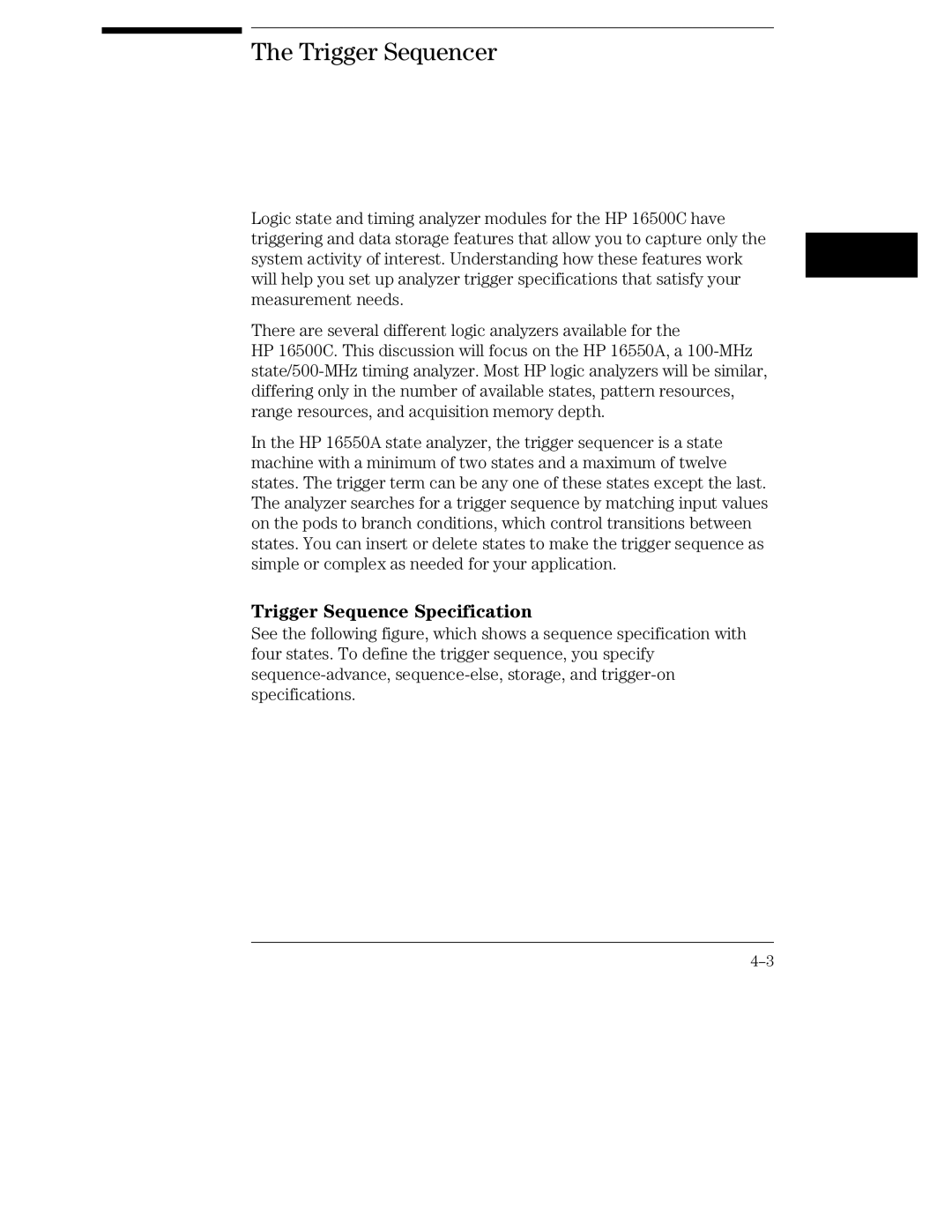
The Trigger Sequencer
Logic state and timing analyzer modules for the HP 16500C have triggering and data storage features that allow you to capture only the system activity of interest. Understanding how these features work will help you set up analyzer trigger specifications that satisfy your measurement needs.
There are several different logic analyzers available for the
HP 16500C. This discussion will focus on the HP 16550A, a
In the HP 16550A state analyzer, the trigger sequencer is a state machine with a minimum of two states and a maximum of twelve states. The trigger term can be any one of these states except the last. The analyzer searches for a trigger sequence by matching input values on the pods to branch conditions, which control transitions between states. You can insert or delete states to make the trigger sequence as simple or complex as needed for your application.
Trigger Sequence Specification
See the following figure, which shows a sequence specification with four states. To define the trigger sequence, you specify
